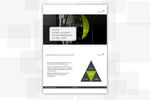Since the GDPR came into force, IT managers and compliance managers have been faced with the challenge of meeting the high demands on data management. The penalties are high: up to 4% of the global annual turnover or 20 million euros in the case of a serious violation of the GDPR.
Many companies have not yet taken the appropriate measures for archiving in accordance with the GDPR. The incidents of the past years show that some pitfalls in data archiving result in penalties of record amounts - but are avoidable.
An example for a company acting too late is the housing association Deutsche Wohnen. The housing association was sentenced to a sum of 14 million Euro at the end of 2019. An important reason for this: The archive system had no delete function. As a result, personal information of customers and interested parties was stored for years, even if there was no longer a tenancy or the reason for the data processing had expired.
Sanctions are getting continuously tougher. There is still an urgent need for action, even months after GDPR came into force. But how is it possible that companies get into such a situation? Here we’ll tell you the 5 pitfalls which organizations have to avoid.



